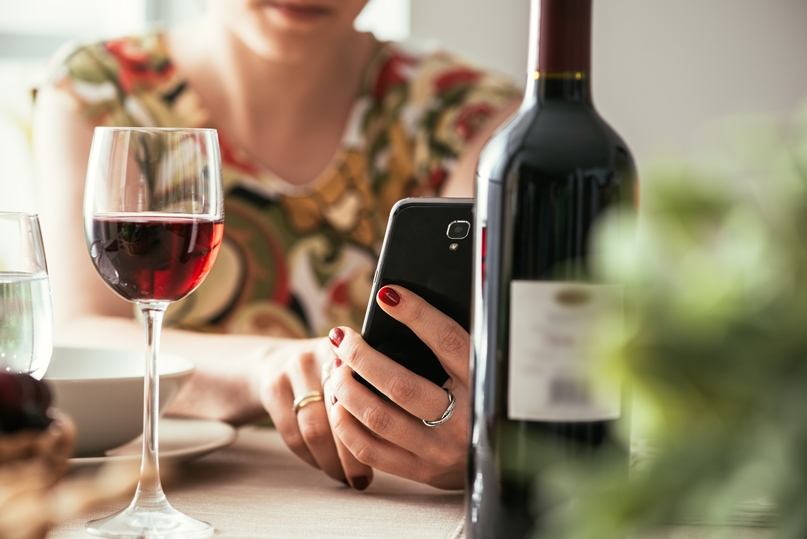Following the announcement from the UK Government regarding the end of Covid restrictions, there is a lot of speculation about how the hospitality industry will again be affected and if the technology we have seen blossom over the last 18 months will still play such a significant role in delivering safe and efficient customer service.
At the end of 2019, if a customer in a bar, restaurant or cafe wanted to order and pay for their food and beverages using their mobile phone the businesses in which they could do this would have been very limited. But, since the pandemic hit in early 2020 the hospitality and tourism sectors were forced to quickly adapt, and with recommendations of reducing face to face contact, the use of self-ordering mobile applications really took off.
It has now been announced that from July 19th most of the restrictions currently in place in England will end, which means that the hospitality sector will no longer be legally required to use table service. But, with all the resources that went into speeding up the development to keep the sector trading as safely and effectively as possible, it would be a backward step to revert to exactly how things worked before.
Whilst queuing at a bar could be argued to be quintessentially British, the use of table service apps and order and pay technology has become a favourable upgrade among many consumers, allowing them to relax and enjoy a fresh customer experience. Of course, there is a certain degree of social interaction that is missed with mobile ordering, but this customer rapport can still be built at the time of food and beverage delivery.
It may not be an entirely new concept, but the introduction of mobile self-ordering apps has allowed for a shift of focus to purely service and delivery, saving overheads by reducing the chance of overstaffing, whilst decreasing table turnover times. Not only are there more opportunities for customers to be seated and served, but it has also been shown that when using mobile order technology, the customer spend per head is higher due to their ability to clearly see offers and availability. The opportunity for upselling is significantly improved.
Staffing ratios has been one of the many great challenges during the pandemic. Hospitality and tourism businesses faced with restrictions have had to completely re-think their standard operating procedures. Putting digital menus and the ability to order and pay in the hands of customers is only part of the process. Having good processes in place for accurate order management is vital. The ability to control the volume and flow of orders and the type of orders accepted in a session or specific period is key to delivering an efficient service. Incoming orders for table service, click & collect or for delivery need to be visible both on screen and, where required in a printed format too. The Self-ordering web app that allows parameter settings such as opening and closing times, core ordering times, and peak times to be managed is a great asset but what happens when the order volume is just too great? This is where seamless EPOS system integration and the ability to pause incoming orders comes into its own.
With self-ordering and pay at the table now widely accepted, operators who have a fully integrated EPOS and ordering system will be able to offer the best of both worlds. Those with an end-to-end solution, to include Order at Table, Click & Collect, and Deliveries as an all-in-one system with EPOS, stock control, business reports and analytics will be able to manage all the different trading scenarios more efficiently.
As well as improved order management and control, an additional benefit of using an end-to-end EPOS and self-order system is the live link with dish availability. With ‘live’ product availability linked to the digital menu, the age-old frustration of diners ordering only to be disappointed shortly afterwards with an apology is solved with order and pay at table.
Customer self-ordering systems allow for fast and easy payments to be taken and reduce the opportunity for a customer to leave without paying which is still unfortunately an issue a lot of hospitality businesses face. There is also an increase in food order accuracy when using mobile ordering systems, especially with added behind the scenes control and kitchen printing. With less chance of human error and misunderstanding, customer satisfaction rates increase, which also reduces the opportunity for a poor review.
These ordering options can also be extremely useful for those who prefer less social interaction, as with reduced contact, there will be less stress. Plus, allergen information can be displayed clearly, making those with intolerances and allergies much more comfortable when self-ordering. This is especially important as we see the introduction of Natasha’s Law later this year.
An ideal world would see the option given to the customer, those needing that extra interaction and a chance to stretch their legs, or who may struggle with the technology would have the opportunity to order in person, whilst mobile service is still available for those who would prefer not to.
Since launching our Vine self-ordering app in early Summer 2020, there has been a notable uptake, from on-campus to bars, specific events and attractions – the possibilities are endless when using mobile ordering technology. With Vine, there is no need for the customer to download an app that takes up precious space on their phone, there is instead a user-friendly URL, or a QR Code that can be quickly scanned taking them straight to where they need to be.
Software development is ongoing and this month we will be launching the option to display dish images in the app. Our trials have shown that displaying tempting dish images in the digital menu is boosting sales!
We are here to help. Why not get in touch and request a simple to use demo and see how Vine can help you to grow your business.

